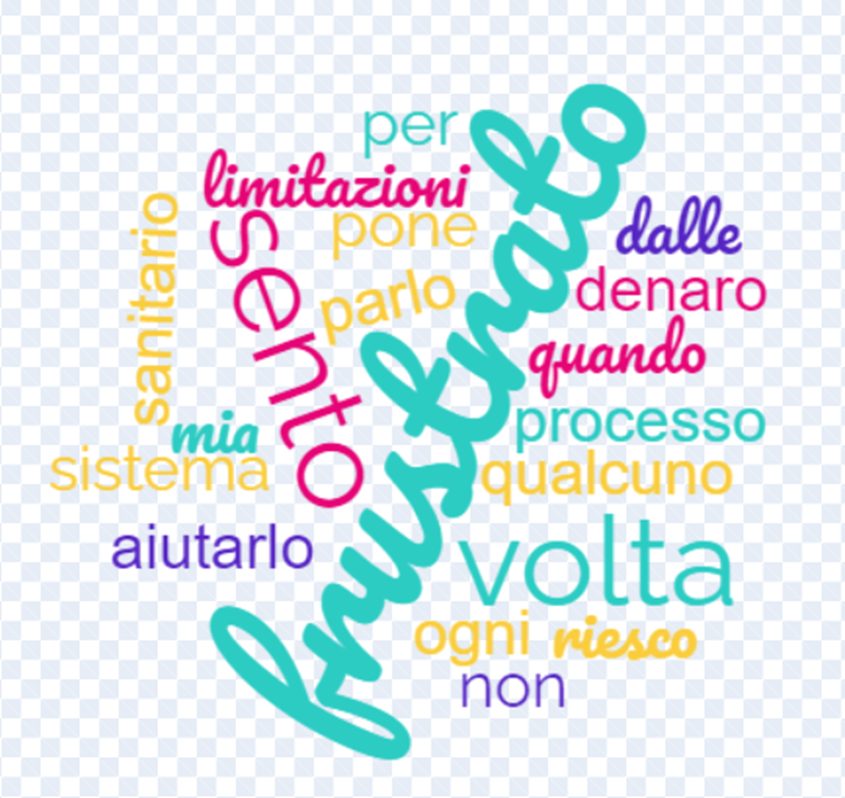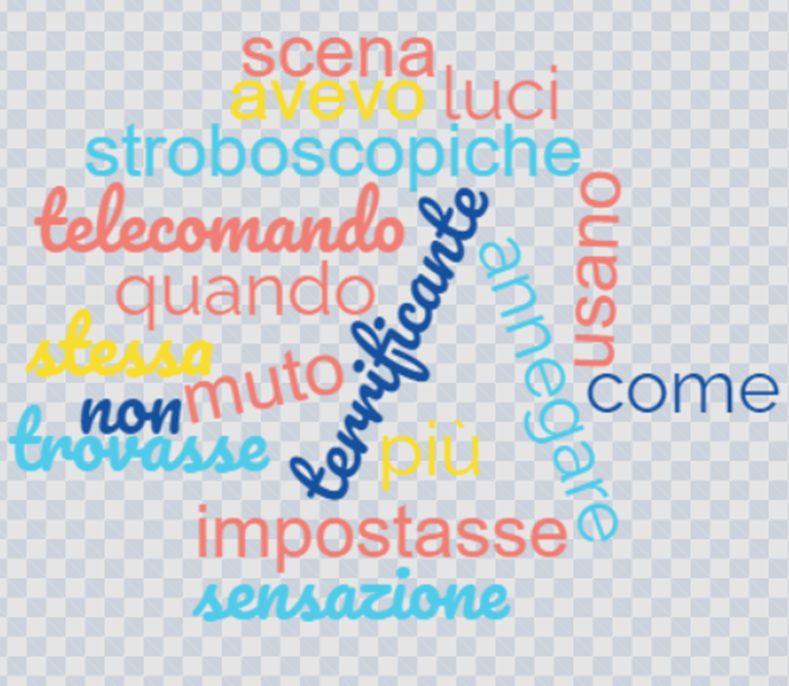
14TH EDITION.
Aphasia: giving voice to curators, carers and caregivers
Marta Aurora

Author: Marta Aurora, a doctoral candidate in Educational Linguistics, History and Italianistics at the University for Foreigners of Siena and engaged in a project on Narrative Medicine
Goals
This project investigates the extent to which the narrative approach can contribute to the reattribution of meaning to the aphasic experience and the radical changes it brings to the lives of affected patients and their caregivers. Another goal is to share the results of narrative research with caregivers for the purpose of greater personalization of treatment. Therefore, consistent with the fundamentals of narrative medicine, the collection of the stories was based on the criterion of representativeness of the three parties involved in care: patient, caregiver and caregiver. The data come from two very different but equally significant realities: the first is the National Aphasia Association (NAA), the first U.S. nonprofit organization directed by people with aphasia and their caregivers, which has been raising awareness and advocacy on the issue since 1987; the second is A.L.I.Ce. Biella, the provincial branch of the National Association for the Fight against Cerebral Stroke, formed by patients, family members, health and rehabilitation personnel and finally volunteers sensitive to the problem of cerebral stroke (with which aphasia is often associated).
The narrative evidence
In 2019, the NAA collected 60 aphasia stories, Aphasia Threads, (aphasia threads/plots), told by aphasics, caregivers, and therapists. For each author type, the narratives are structured around the following prompts: how aphasia changes lives, what helps in this journey, what caregivers and therapists can learn from aphasics, and vice versa. By analyzing the narratives using Sketch Engine software, words were identified to convey the narrators’ emotions, particularly through figurative language. Emerging from the patients’ texts is the perceived social judgment and stigma that associates, through lack of knowledge of the topic, the aphasics’ reduced verbal faculties with their cognitive impairment (Kleinmann’s sickness): “People think your mind doesn’t work anymore. Remember that it is not the person’s intelligence that changes, only the way his thoughts are expressed” (A)[1] .
Patients and caregivers seem anchored in the memory of their life before aphasia: “People remember what they knew how to do before aphasia, and when they come in, they ask me how they can get back to their former selves” (T).
The linguistic survey of the approach to the future returned both an optimistic and repaying view of current efforts, and more cautious and realistic considerations of the difficulty and complexity of the rehabilitation journey: “[…] This is an incredibly difficult job for which none of us have been trained, and you will do your best. […] You will be reminded of the duration, complexity and real impact of aphasia” (C). “[…] The time and effort you devote to your recovery will be worth it.” (T).
The most recurrent conditions that transpire from the narratives are related to difficulty and fatigue as evidenced by the frequent occurrences of the adjective hard (difficult) in the narratives of all the narrating subjects: “It is hard to find social activities” (A). “It is hard to see him struggle to express his wants and needs” (C). “Aphasia […] requires a lot of work and perseverance” (T).
Another dominant emotion common to all narrators is frustration: “I feel frustrated every time I talk to someone” (A). “And in turn, I feel frustrated when I can’t help them” (C). “I am frustrated by the limitations our health care system places on time and money for this process” (T).

As for figurative language, similarities afferent to different sensory areas, the absence of sound, and optical disturbances should be noted: “It’s terrifying, I feel like I’m drowning, […] it’s as if you set the mute on a scene and you can’t find the remote control anymore. I had the same feeling as when you use strobe lights” [A].

In the case of the collaboration with Alice Biella, the collection of narratives was smaller ((5: 2 aphasics, 2 volunteers, 1 caregiver), but it was possible to create an ad hoc narrative track. Some volunteers and caregivers offered to assist patients in completing their track or preferred an open interview always based on the track. This aspect is indicative of the relationships between caregivers and caregivers and a direct sharing of experience, not mediated by writing.
The traces were again addressed to the three subjects of the treatment journey according to time phases: before, during and after aphasia, how one imagines the future. All were also asked to write down how they felt after the narrative, to also detect any (transformative) effects it brings. In addition, a visual prompt (Renoir’s The Rowers’ Breakfast) was proposed to reveal the narrator’s perception of his social and communicative relationships in the aphasia experience, asking which of the characters he identified with. An important result emerged from the narration of a caregiver, who identified with the side character in the painting, slightly deviated from the conversation, because she recognized there her role as a non-participating observer of social events, recalling how acquaintances made fun of her husband’s expressive difficulties (the theme of stigma and ignorance about aphasia returns).

The narrative tended to be more untethered from the proposed narrative stimuli and close to chaos, conveying a search for meaning, a quest. A great emotional intensity emerged, recognizable in these words: Telling this story did me good. Because it’s always good to relive. You can understand what you left behind, you can also understand though all that you found.
And what to do with it…
The publication of the NAA narratives, in their plurality of perspectives, has great potential on social awareness of aphasia, and the project could be replicated in our country as well. Alice Biella’s narrators preferred heterogeneous forms of narration to the prepared outline. If this made the work less systematic on a methodological level, it also made it possible to exploit the unpredictability of storytelling by touching on other themes of narrative medicine, for example that of the parallel folder, which was welcomed by the association with curiosity and interest in experimenting with it in clinical practice.

[1] In the article, quotations from the narratives of the different narrators will be referred to as follows: A (person with aphasia), C (caregiver), T (therapist).
